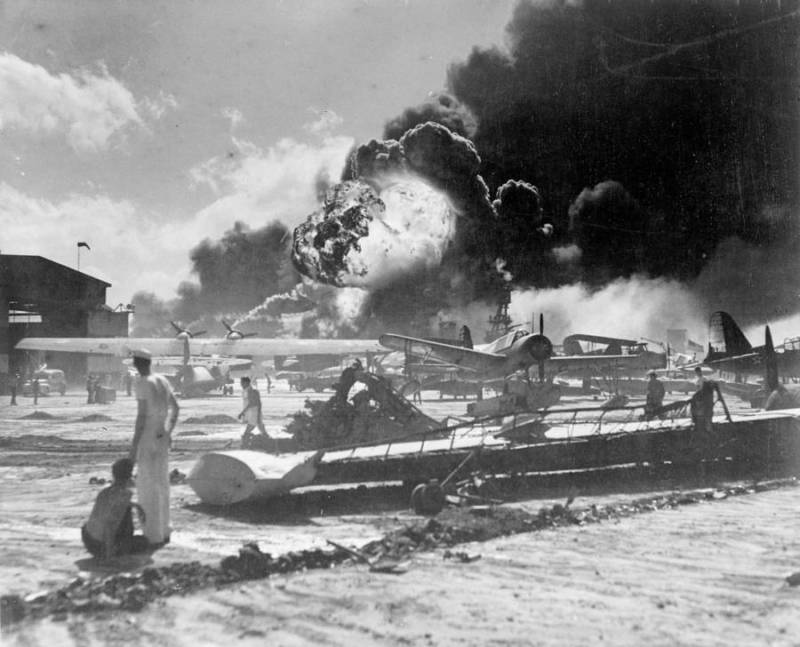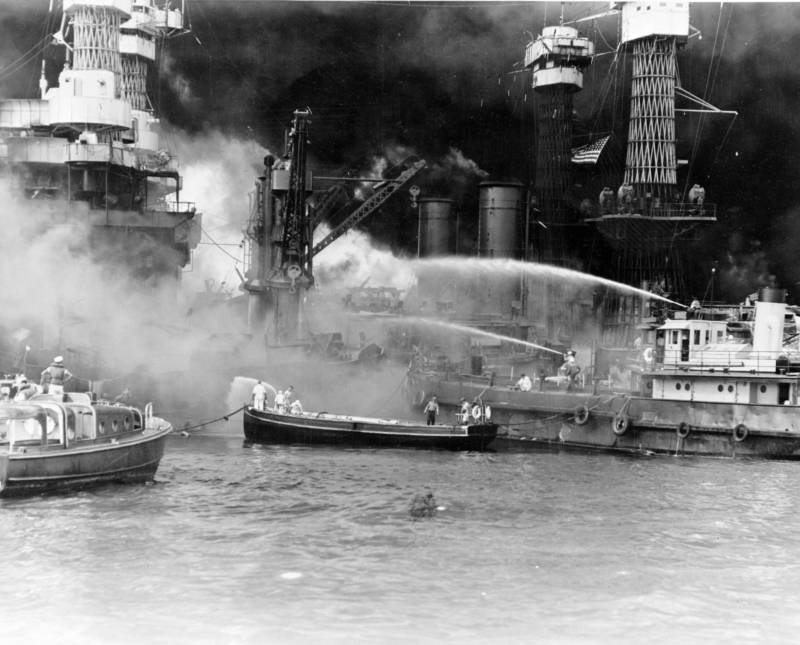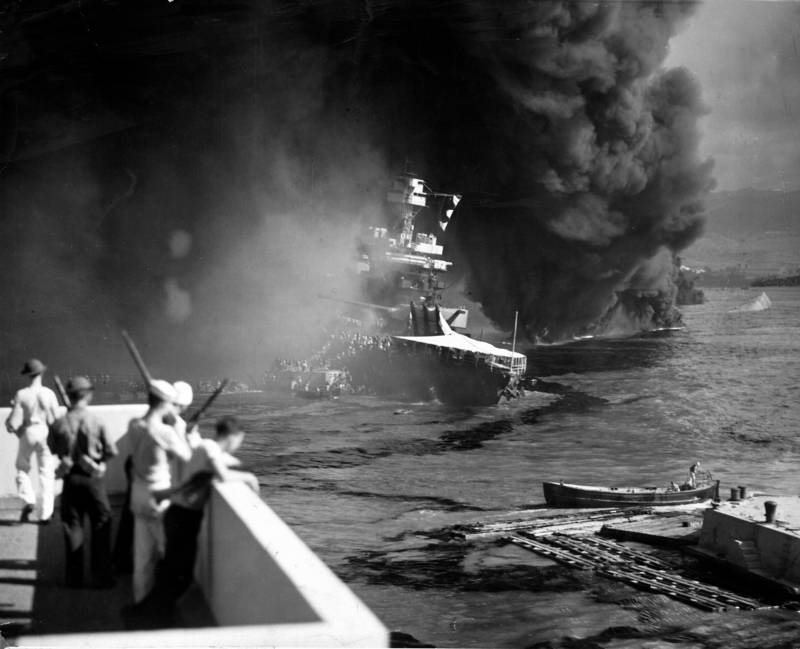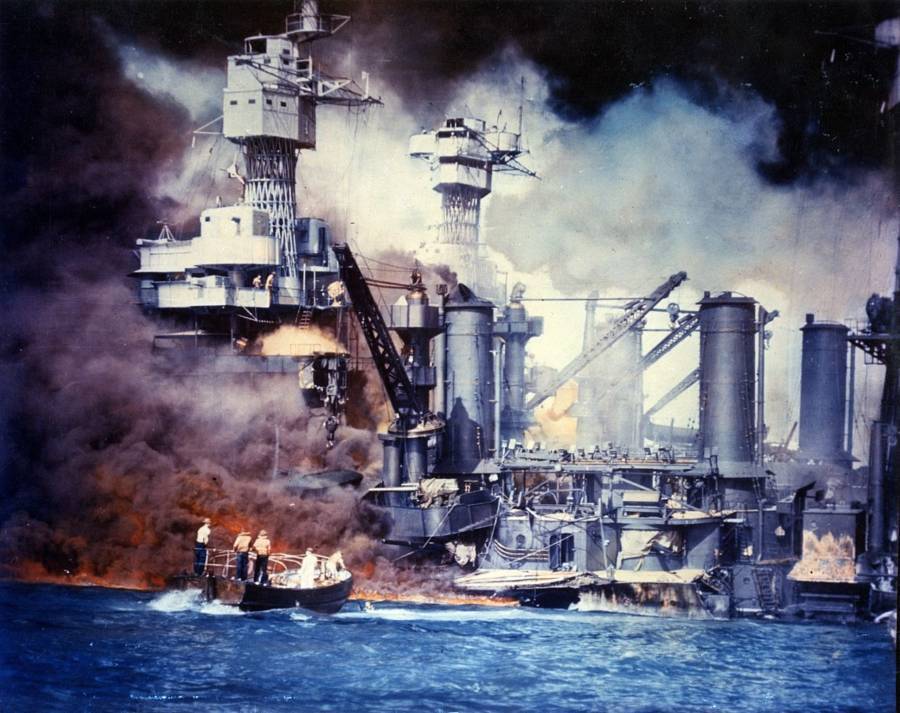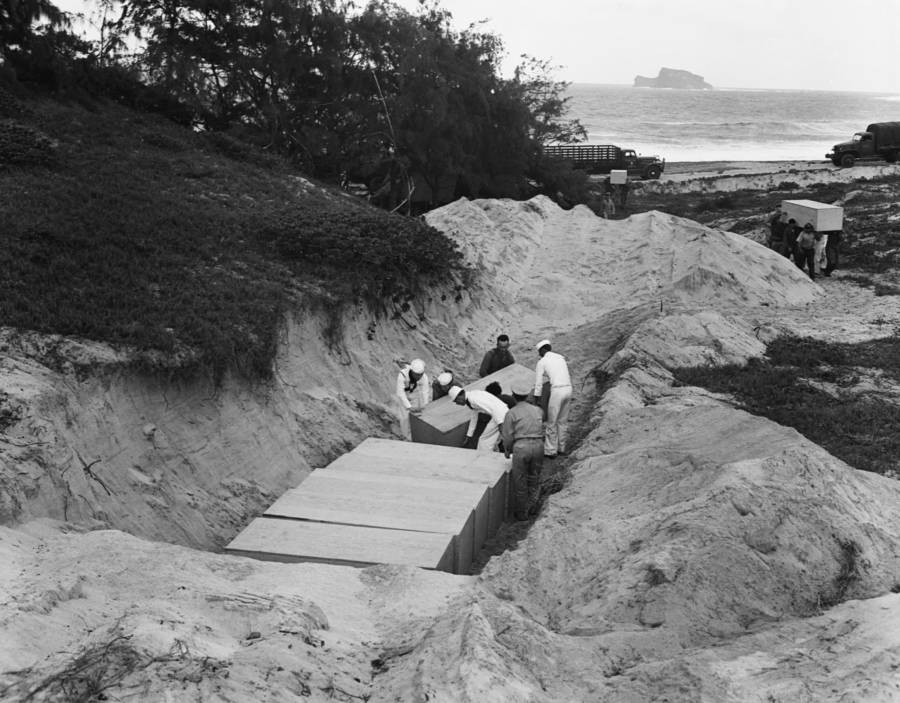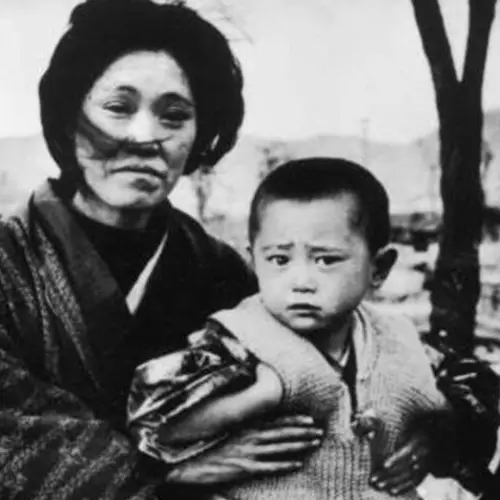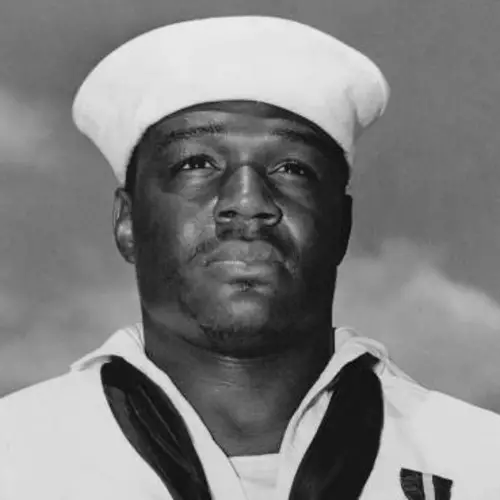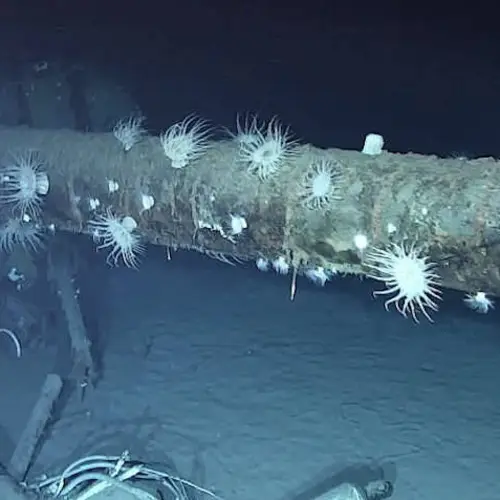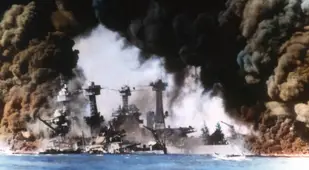See why the Pearl Harbor attack carried out by the Japanese against the U.S. in Hawaii on Dec. 7, 1941 was a "date which will live in infamy."
The course of both American and world history forever changed on Sunday, Dec. 7, 1941. In the early morning hours before most of the residents of the Hawaiian island of Oahu were awake, the Japanese launched the Pearl Harbor attack on the U.S. naval base there, setting in motion the events that sent the United States into World War II.
Tensions between the Americans and the Japanese had been rising for nearly a decade by the end of 1941, and yet, the United States was extremely unprepared for the attack on Pearl Harbor. When the bombs began raining down on the base and torpedos struck the battleships in the harbor, the nation was shocked.
The surprising nature of the attack made it one of the most scrutinized military episodes in U.S. history. The United States government and the American people did both know that war with Japan was possible, though it still seemed that no one had anticipated the Pearl Harbor attack.
And once the attack took place, Japan hoped that the U.S. would relax some of the economic sanctions they'd placed on the nation and that the morale of the American people would be crippled. Unfortunately for the Japanese, neither of these wishes came true.
As the American people united like few times before or since, President Franklin D. Roosevelt declared war, officially thrusting the U.S. into World War II and reshaping the history books forever.
Buildup To The Pearl Harbor Attack
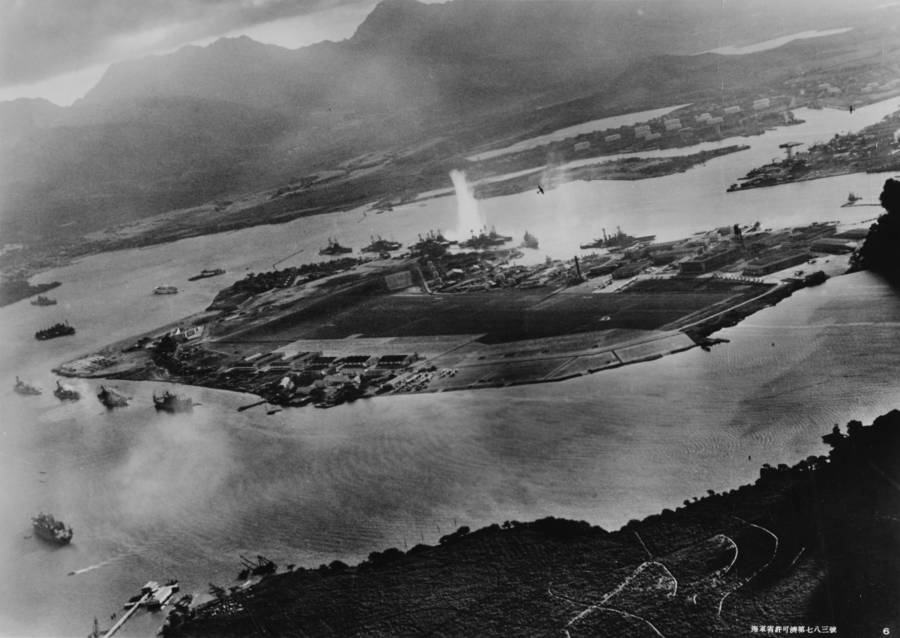
U.S. Navy/National ArchivesPhotograph taken from a Japanese plane amid the torpedo strike on ships moored on both sides of Ford Island during the Pearl Harbor attack.
Though the Japanese attack on Pearl Harbor shocked the United States, the two countries had been slowly creeping toward war for years.
For one, China had become an enormous source of conflict between the United States and Japan in the preceding decade. American foreign policy in the Pacific grew increasingly entwined with the nation's alliance with China by the late 1930s. And as China came into conflict with Japan, Japan likewise came into conflict with the U.S. as well.
After a highly nationalistic and militaristic regime took control of Japan in the late 1920s and early 1930s, the country invaded China in 1931. Taking control of the Manchuria region, a branch of the Japanese military set up a puppet government there that was widely criticized for perpetrating a number of abuses on the Chinese people.
The rest of the decade only saw an increase in conflict between Japan and China as the former tried to expand its territory and influence in the Pacific. Eventually, in July 1937, all-out conflict commenced between the two nations with the start of the Second Sino-Japanese War.
The war caused the United States to impose a wide range of trade embargoes and economic sanctions upon Japan. The Americans hoped that this would quell Japan's appetite for expansion. However, it had the opposite effect and the Japanese only became more steadfast in their expansion plans.
The relationship between Japan and the U.S. continued to devolve from there.
In Sept. 1940, Japan joined Germany and Italy to become a formal member of the Axis powers when they signed the Tripartite Pact. With the signing of the Tripartite Act, Japan now would be helping support Germany and Italy, both enemies of the United States, which was technically still neutral at this point following the start of World War II with Germany's invasion of Poland the year before. And when Japan joined the Axis, the U.S. imposed more sanctions and embargoes upon Japan, whose expansion in the Pacific was ever increasing.
By the time the summer of 1941 rolled around, Japan had occupied all of Indochina. But Japan knew that if they launched a full-blown invasion of all of Southeast Asia, the U.S. would have no choice but to engage in a formal war with them.
Japan thus needed a way to buy time to conquer their major targets in the area without fear of U.S. military retaliation. And because it would cripple the major U.S. military outpost in the Pacific, the Pearl Harbor attack was the perfect way to limit the possibility of U.S. retaliation.
The American people were aware of these rising tensions between Japan and their country. According to a Gallup poll taken in late Nov. 1941, 52 percent of Americans believed that the United States would be at war with Japan "sometime in the near future."
In a news release from a few days after the Pearl Harbor attack, George Gallup revealed that Japan's actions, especially in China, in the months leading up to Pearl Harbor caused more and more Americans to favor "stronger measures against Japan."
Gallup explained further, saying:
"Ever since July of this year, a majority of voters have been in favor of taking definite steps to curb Japanese expansion even if it meant risking war. This sentiment increased sharply when the Japanese invaded Indo-China in July. From this moment Institute surveys found two-thirds or more of the American people willing to take the risk of war in order to top Japan from becoming more powerful."
Japan's Preparations And The Warning Signs
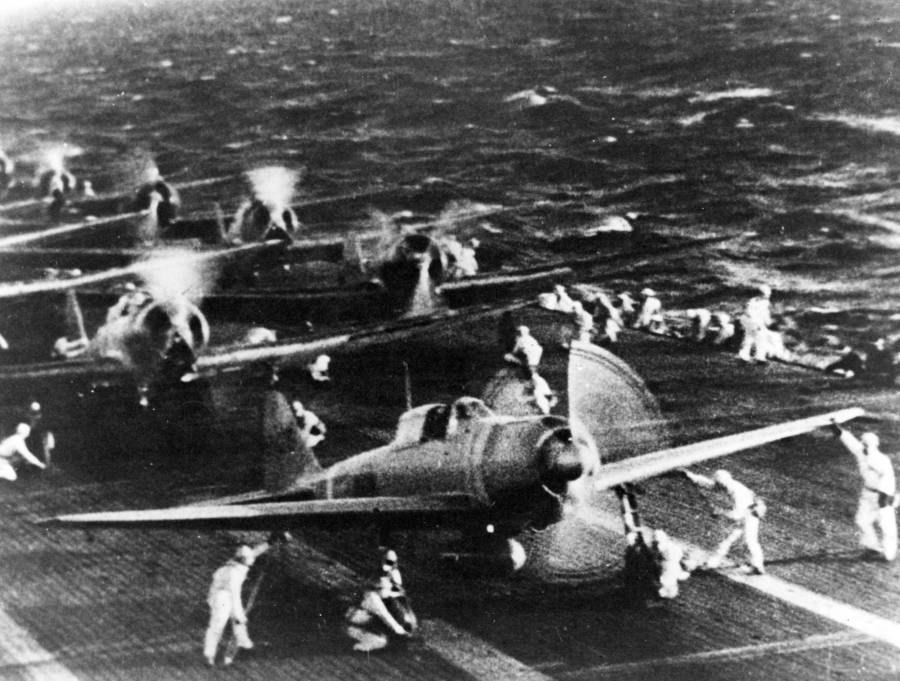
U.S. Navy/National ArchivesJapanese naval aircraft prepare to take off from an aircraft carrier (reportedly Shokaku) just before the Pearl Harbor attack.
Because of the escalating tensions throughout the 1930s and early 1940s, the United States knew that an attack from Japan was probable. However, no one expected that the United States' naval base at Pearl Harbor would be a target.
The base is situated on the island of Oahu, Hawaii, around 2,000 miles away from the U.S. mainland and more than double that distance from Japan. U.S. intelligence officers were not expecting a Japanese attack so close to home and so far from Japan. They instead believed that if and when Japan decided to attack, they would aim at a target closer to their own borders, such as the Dutch East Indies or Singapore, both European colonies in the South Pacific.
But Japan had a specific reason to attack Pearl Harbor. They wanted to cripple the United States' Pacific fleet, which would allow them to conquer the rest of Southeast Asia without fear of American retaliation. When planning their assault, Japan thus focused on destroying as much of the U.S. fleet as possible.
This was what Japanese Admiral Yamamoto Isoroku had in mind when he organized the Pearl Harbor attack. On Nov. 26, 1941, he led a fleet of six aircraft carriers, two battleships, three cruisers, and 11 destroyers to a point 275 miles north of Hawaii. Once they were in place, the Japanese deployed another 360 planes as well. This, the Japanese hoped, would be enough firepower to cripple the Americans' Pacific Fleet.
Since April 1940, Pearl Harbor had been the home of the Pacific Fleet, which included 100 naval vessels, eight battleships, and assorted other military forces. Admiral Husband E. Kimmel and Lieutenant General Walter C. Short shared command of the base and as the tensions rose between Japan and the U.S., they were warned of the possibility of war.
They received three separate warnings on Oct. 16, Nov. 24, and Nov. 27. Part of the final warning Kimmel received said: "This dispatch is to be considered a war warning." The message went on to say that "negotiations have ceased," and instructed him to "execute an appropriate defensive deployment."
They thus enacted measures to prepare for an attack, but those preparations are now seen as extremely inadequate — even as further warning signs popped up.
In the hours before the attack, two U.S. ships spotted Japanese submarines and one private operating the radar noticed a large group of planes closing in but was told to disregard them because a group of U.S. bombers was expected to return during the same time.
The United States ultimately proved shortsighted when it came to the possibility of a Japanese attack relatively close to home. They largely disregard the warning signs as credible threats, and they didn't believe that Japan would attack before a formal declaration of war. They were wrong.
The Pearl Harbor Attack
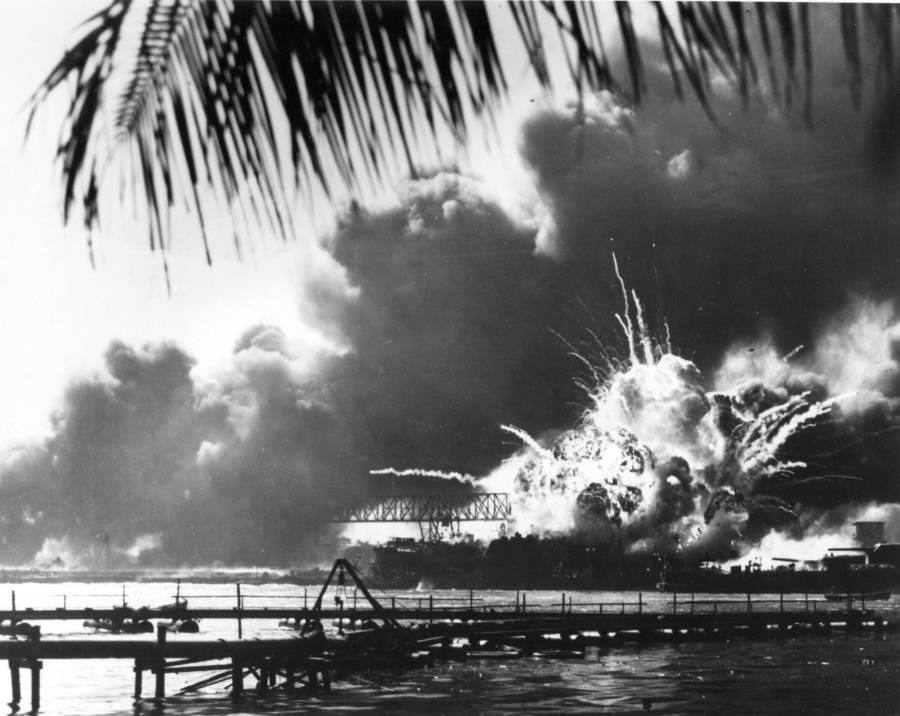
National ArchivesThe forward magazine of the U.S. Navy destroyer USS Shaw explodes during the attack.
Just before 8 a.m. on Sunday, Dec. 7, 1941, the first Japanese dive bomber appeared in the sky over Pearl Harbor. Behind it, a fleet of 200 aircraft, including bombers, fighters, and torpedo planes, followed in what would be the first of two attacks on the base. The Japanese strategically picked this time to catch the Americans off guard, believing that an early Sunday morning would be the opportune moment to strike.
"We thought they were U.S. planes until we saw the big red sun on the wings," remembered William Harvey of the USS Sacramento, "and they began to bomb and strafe, and there was that big red sun on their wings, and it was war."
Due to the insufficient effort that Kimmel and Short had put into preparing for an attack, many of the U.S. military aircraft were huddled tightly together in one, easily-targetable area on Ford Island and the nearby Wheeler and Hickam fields. All in all, 126 planes were stored on Wheeler field and of those, 42 were destroyed during the attack, 41 were damaged but salvageable, and only 43 were still functional.
Just six U.S. planes were able to get into the air in hopes of fending off Japanese attackers during the first wave. Thus the many ships anchored in the harbor were like sitting ducks for the bombers. The first 30 minutes of the attack saw the most damage done to U.S. battleships.
"I stood there with my mouth wide open, watching (a torpedo) go through the water," recalled Paul Kennedy of the USS Sacramento. "(The USS Oklahoma) was over on its side in 20 minutes. The guys that were firing machine guns on the side, they were blown in the air and came down in the water."
At around 8:10 a.m., a 1,800-pound bomb hit the deck of the USS Arizona, landing in the ship's forward ammunition magazine. The ship blew up with 1,000 men trapped inside. The USS Oklahoma was struck by four torpedos in five minutes, which caused the ship to lose its balance and flip over with 400 men inside. Meanwhile, torpedoes laid into the USS California and she slowly sank into the shallow waters of the harbor.
https://www.youtube.com/watch?v=ENhFnfSHraY
For the American personnel under attack, the tragedy and horror were swift and severe. Lt. Richard Mueller Nixon, for example, was a gunnery officer on the USS West Virginia who was off duty when the attack began. He later recounted the feeling of seeing his ship burning in the harbor, saying:
"As we approached Pearl Harbor, huge columns of smoke could be seen arising and I, like the others, assumed the oil tanks had been bombed. On arrival at the dock we learned it was my ship, the West Virginia, from which the smoke emerged. She had been hit hard and was afire. From the landing Ens. Smith staggered up completely covered in oil and he told us the West Virginia had been abandoned and was completely surrounded by oil fires. He also told us of the death of our captain. On the dock was a milling crowd of blue jackets and across the way could be seen a capsized battleship. Smith told me the West Virginia had fired all the ammunition she had ready but an early torpedo had put the ammunition supply out."
"The bombs felt like they were blowing the meat off of your body," Russell McCurdy of the USS Arizona later said. "Every bomb that drops, you think it's gonna hit you."
Sometimes the planes got so close that the American servicemen could look their enemies in the eyes. "I looked in the cockpit and could see the pilot," said William Hollgate of the USS Dobbin. "He was grinning at me."
"They were coming in so close I could see the pilots when they went by," said Donald Stratton of the USS Arizona. "Some were waving and some were grinning."
At 8:50 a.m., roughly 55 minutes after the first wave began, the second was underway. It was shorter and less effective than the first wave but was devastating nonetheless.
The USS Nevada, which was hit by a torpedo during the first wave, was attempting to escape but was struck by eight bombs, rendered immobile, and became stuck in the channel. Several bombs hit the USS Pennsylvania and turned it into a fiery inferno which also damaged two destroyers moored close by.
What's more, U.S. military personnel were not the only people on the island who were caught in the firestorm during the Pearl Harbor attack. Beth Slingerland was a schoolteacher who lived near the harbor with her husband, John, a civilian employee at the naval base. In a letter written during the attack, just after her husband left to go to the base, she paints a vivid picture to her parents:
"The guns began some time ago but I thought they were our own usual gun fire. Then I just got nervous and went out to take a better look to discover all the smoke and just then great spouts of water began rising out of the ocean. . . . The great spouts rose all about some of our battle ships. . . . I turned on the radio just in time to hear that we were under attack by "the Enemy". All I can think of is John down there where they are [attacking.] How do people face bravely the fact that their husbands are in places where they may be killed any day and I can't get any news, of course, and I do not know how long it will be before I shall know anything. I love him so I can't look into the future without him."
Just after 9 a.m., the Japanese fleet withdrew, leaving behind devastation as far as the eye could see.
The Pearl Harbor attack lasted less than two hours, but in that time, the devastation was vast and thousands were killed.
By the time the attack was over, more than 2,400 Americans, both military personnel and civilians, lay dead and 1,000 more were injured. Meanwhile, every single battleship anchored in Pearl Harbor was significantly damaged or completely destroyed. All in all, close to 20 U.S. ships and more than 300 airplanes were damaged or destroyed in the attack.
The U.S. Declares War
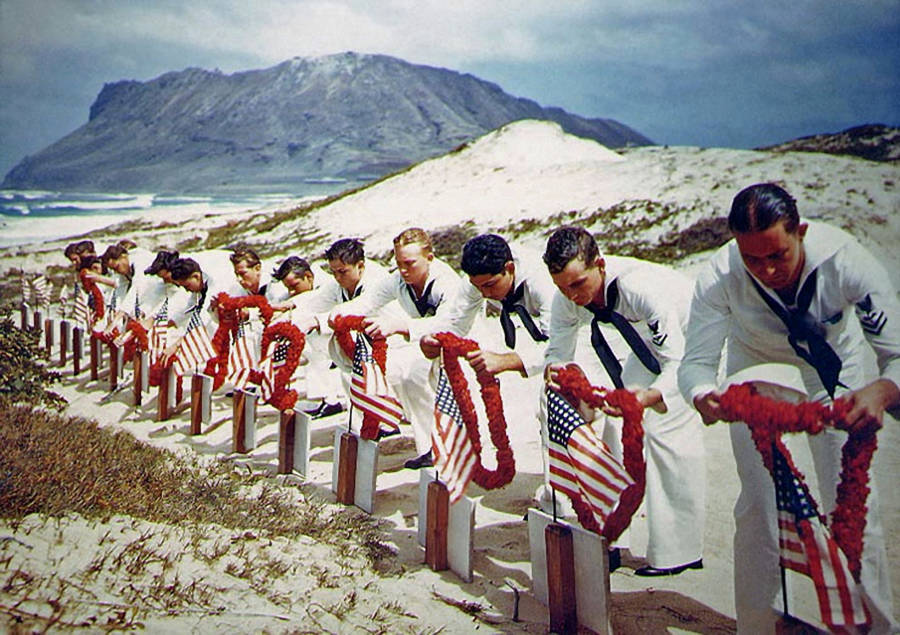
Galerie Bilderwelt/Getty ImagesEnlisted men of the Naval Air Station at Kaneohe, Hawaii, place leis on the graves of their comrades killed in the Japanese attack on Pearl Harbor.
On Dec. 8, 1941, the day after the Pearl Harbor attack, President Franklin D. Roosevelt addressed Congress and famously dubbed the previous day as "a date which will live in infamy." In this now-iconic speech, President Roosevelt disregarded any previous notions of neutrality and asked Congress to formally declare war against Japan:
"No matter how long it may take us to overcome this premeditated invasion, the American people in their righteous might will win through to absolute victory. I believe I interpret the will of the Congress and of the people when I assert that we will not only defend ourselves to the uttermost, but will make very certain that this form of treachery shall never endanger us again."
Congress swiftly approved Roosevelt's declaration of war with only one person — Rep. Jeannette Rankin of Montana, a devout pacifist — voting against it. Just three days later, Japan's fellow Axis powers, Germany and Italy, both declared war against the U.S. and the U.S. responded in kind.
The American people showed the same unanimity. In the days directly after the attack, Gallup polled American citizens about their feelings towards Japan, the president, and his decision to declare war. An overwhelming 97 percent of Americans approved of the decision to go to war with Japan, and only two percent said they disapproved.
The poll also revealed that 51 percent of Americans thought that the war with Japan was going to be long while 36 percent predicted that it would be short. Meanwhile, 65 percent of the Americans surveyed believed that the war would be difficult, 25 percent predicted that it was going to be an easy U.S. victory, and nine percent were unsure.
Of course, long and difficult is precisely how the war turned out.
The Aftermath And The War

CORBIS/Corbis via Getty ImagesMilitary personnel pay their respects beside the mass grave of 15 officers and others killed in the bombing attack. A U.S. flag is draped over the coffins.
While the Pearl Harbor attack was not perfectly executed or planned, it still achieved its main goal of crippling the Pacific Fleet, at least for a little while. While the U.S. fleet bounced back a few months after the Pearl Harbor attack, the Japanese won every major battle until Midway in June 1942.
The Japanese were able to spread across the Pacific and occupy territories from Manchuria to the East Indies thanks to the time that the attack had bought them. However, they weren't successful at truly knocking out the Pacific Fleet. They inflicted devastating damage but, in the planning of the attack, they left out major targets which allowed the U.S. to bounce back relatively quickly.
During the planning, the Japanese had been extremely focused on destroying the fleet and didn't target the American shore facilities, repair shops, and oil reserves, the destruction of which could have had a much longer-lasting impact on the American military.
And while the Japanese inflicted severe damage on the American battleships, all of them besides the USS Arizona and the USS Oklahoma were able to be repaired. On top of that, by the early 1940s, battleships were no longer the United States' most important naval vessel: Aircraft carriers were. And at the time of the Pearl Harbor attack, every single one of the U.S. Pacific Fleet's carriers was away from the naval base.
But perhaps the most important oversight that the Japanese made in regard to the Pearl Harbor attack was its effect on American morale. They hoped that the attack would diminish the American spirit, but the opposite was true and nearly the entire country was united behind their president and his decision to declare war against the Japanese.
The Legacy Of The Pearl Harbor Attack

U.S. Navy/National ArchivesThe USS Nevada afire off the Ford Island seaplane base, with her bow pointed up-channel.
The United States was woefully unprepared for the Pearl Harbor attack, and as a result, the episode was studied and investigated thoroughly in order to assign blame, determine missed signals, and prepare to make sure that a similar event would never happen again.
President Roosevelt appointed a commission headed by U.S. Supreme Court Justice Owen J. Roberts to investigate the attack and figure out who exactly was to blame for it. Just a few weeks after the commission had been appointed, they released their report and placed the principal blame for the attack on Kimmel and Short, who were removed from command of the base.
Eventually, however, both the Army and Navy review boards examined the assault and reached a different conclusion than the Roberts Commission. They concluded that the War and Navy departments were responsible.
One other theorized cause that was never officially found to be true was a so-called "Back Door to War" theory. This conspiracy theory claims that Roosevelt was looking for a reason to enter into war with Japan, but the U.S.'s policy of neutrality was getting in the way.
Supporters of this theory believe that Roosevelt suppressed prior knowledge of the impending Japanese attack or even egged them on as a metaphorical "back door" that he could use to enter the war.
However, ample evidence refutes this idea. For one, the U.S. was ill-prepared for war in Dec. 1941. Large numbers of their forces were aiding British and Russian troops, and Roosevelt still needed more time to build up his armies. Furthermore, the U.S. had adopted a "Europe first" strategy when it came to the war and saw Germany as its main opponent.
But whoever was at fault for the U.S. lack of preparation, the Pearl Harbor attack elicited consequences far weightier than any kind of internal blame game.
In the short run, Japan's attack on Pearl Harbor was mildly successful. They were able to gain some ground in the Pacific while the U.S. rebuilt their fleet and they had embarrassed the powerhouse United States on the world stage. However, in the long run, the attack proved to be a fatal choice for the Japanese.
The attack erased much of the antiwar sentiment in the United States and caused the country to band together in an unprecedented way that changed history in ways still felt to this day.

After this look at pictures from the Pearl Harbor attack, discover the story of Doris Miller, a black man who was relegated to the kitchen but went on to become a hero at Pearl Harbor. After that, take a look at these powerful World War II photos that most people haven't seen.

